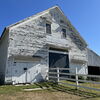All together, now | A new state program attempts to enhance tie-ins between cultural events and well-heeled tourists
When Eileen Horner purchased the Brunswick Inn two years ago, she began to think of new ways to attract guests to her restaurant and inn.
The inn is down the street from Bowdoin College, so visiting parents were already a mainstay during the school months. But Horner wanted to attract guests who were not just in town to visit their kids, but who came for other reasons, perhaps to see a performance at the Maine State Music Theater, tour the Joshua Chamberlain Museum or attend a recital at the Bowdoin International Music Festival.
Horner is not alone. Increasingly, people are talking not just about the importance of tourists, but the most valuable breed of tourist: the cultural tourist.
Recent studies show that the people who partake of local cultural offerings when they travel — visiting a museum, attending a music festival or touring historic sites, for example — spend more money and stay longer than tourists who visit Maine for its beaches, hiking trails and other leisure activities. In other words, cultural tourists are a business owner’s ideal customer.
“From our point of view, it’s a no-brainer,” Horner says. “It’s foolish to just think of college parents or people driving to Popham Beach with all the things to do in walking distance from us. So we really had to work that angle.”
Horner began inviting musicians to perform in her bar and showing the work of local artists in a gallery space in her inn. She brainstormed other cultural offerings and packages she could offer her guests.
The work paid off. Her sign promoting the inn’s musical nights led the director of the Bowdoin International Music Festival to contact her about a partnership. Horner’s business is now the “Official Inn of the Bowdoin International Music Festival” and hosts dinners for the musicians who perform during the six weeks of the summer festival, which generates an estimated $3.9 million in revenue for local businesses, according to the festival’s website.
Horner can’t quantify the effect it’s had on her business, but her occupancy has increased the last few years. Most recently, she saw a 6% increase in her occupancy rate from April 2010 to April 2011. “If you expose [guests] to what Brunswick has to offer, they are more apt to come back to Brunswick again and again,” she says.
Horner says the increased focus on attracting cultural tourists likely comes from the recession forcing business owners to think more creatively, and the prevalence of Internet-aided vacation planning for businesses and cultural organizations that helps them collaborate on packages to crosspromote one another on their websites. “It’s more sleek, more streamlined, more user-friendly and easier to reach more people,” she says.
Shoring up collaborations
At the Maine Office of Tourism, the focus on cultural tourism is not new. “It’s been part of the discussion for years,” says Director Carolann Ouellette.
In fact, the tourism office has employed a cultural tourism coordinator for a number of years to work with cultural and heritage organizations throughout the state on everything from marketing to collaborations. Abbe Levin, Maine’s current cultural tourism coordinator, says the position shows the state “understands the economic benefits of [cultural tourism].”
A particular fact about cultural tourists underscores their importance to the economy: They tend to come during the off-peak seasons. “We need as much of that shoulder season money as we can get,” she says.
The tourism office recently launched a cultural tourism project to help attract this type of visitor. MainePerforms is a brochure and website that highlights the performance-based attractions in the state. It covers the spectrum of performance art and includes, among others, the Acadian Festival in Madawaska, the Portland Symphony Orchestra, the Maine International Film Festival in Waterville, the Bates Dance Festival in Lewiston, the American Folk Festival in Bangor and the Oddfellow Theater in Buckfield.
The tourism office takes into account its own marketing research when deciding what initiatives to pursue, but it also takes into account national studies. A 2009 report found 78% of all U.S. leisure travelers participate in cultural and/or heritage activities while traveling, which works out to roughly 118.3 million adults each year. Those cultural travelers spent an average of $994 per trip — more than the $611 spent per trip by non-cultural travelers — and annually contribute more than $192.3 billion to the national economy, according to the report, commissioned by the U.S. Cultural & Heritage Tourism Marketing Council.
A more local study from the Maine Arts Commission assessing the economic impact of the state’s museums found that in 2009 approximately 442,000 people visited 14 participating museums and spent nearly $71 million, which translated into a multiplier effect of nearly $148 million. The study also found that one in five visitors at the museums — including large ones such as the Maine State Museum in Augusta and the Portland Museum of Art, as well as small ones like the Abbe Museum in Bar Harbor and the Tides Institute and Museum of Art in Eastport — identified the museum visit as the primary reason for making the trip, showing that museums are a significant driver of tourism.
Echoing the national study, the Maine museum report found that overnight museum visitors spent approximately $243 per day compared to overnight visitors who came to Maine for “leisure” purposes and spent $104 per day. “Clearly, the people who visit Maine’s museums are ideal tourists for Maine shopkeepers, innkeepers, restaurant owners and other local businesses,” the report’s authors conclude.
“Everybody whose business depends on quality wants those type of tourists,” says Will Neilson, co-owner of Solo Bistro in Bath, who partners with the Maine Maritime Museum to host dinners for special events like the museum’s annual symposium on maritime history. “The real thing about cultural tourism from my point of view is it’s about quality. Cultural tourists are interested in quality, and so if what you’re selling is quality and a little outside the generic, they’re obviously right at the top of the list.”
Solo Bistro has marketing material at the museum and is highlighted on its website. Neilson has a hard time quantifying exactly how much business the museum brings, but he suspects it’s a sizable chunk. “The Maine Maritime Museum is one of the 800-pound gorillas in the state for cultural tourists,” Neilsen says. “It’s just a big, big attraction, so for a business in Bath, whether Solo Bistro or any other business interested in selling a quality proposition like we are, they’re an incredibly important partner … I know it would be a big blow to us if we didn’t have the kind of traffic generated from the Maine Maritime Museum.”
It’s not just in Maine’s larger cities and towns that cultural tourism plays a role in boosting business. In western Maine, Jonathan Spak and his wife, Natalie, have been running the Oxford House Inn in Fryeburg for the past three and a half years after moving from Connecticut. Spak was surprised at the cultural attractions in the area. “We thought we were moving to the sticks in Maine,” he says. “But there’s a surprising amount of culture in these hills.”
The area offers the Stone Mountain Arts Center in nearby Brownville and the Leura Hill Eastman Performing Arts Center at Fryeburg Academy, among others. “It helps us to know all that stuff because it makes our place more inviting if we have more things to do for our guests,” he says.
The Oxford House Inn has a link to the Stone Mountain Arts Center’s website and offers guests who attend a show there 10% off their stay. They offer to help arrange transportation to and from the show if guests don’t want to drive. Likewise, the art center lists the Oxford House Inn, among several others, on its website. The cross promotion makes sense to Spak. “Our target market is the same as Stone Mountain’s,” he says. “We‘re trying to hit those late 20s to early 50-somethings with disposable incomes.”
The realization that cultural institutions and businesses have a sort of symbiotic relationship is one Levin says most businesses and cultural organizations in Maine understand. “That’s why you will see that many, many cultural institutions in this state have great working relationships with their business partners,” she says. “Because it’s a win-win for everybody.”
Reaching out
Converting cultural tourists into customers is easier for some businesses than others. Rhonda Nordstrom, owner of Rheal Day Spa in Rockland, has been looking for ways to capitalize on the large number of people who visit Rockland for the Farnsworth Art Museum and numerous other art galleries, but it hasn’t been easy. “I’m not sure how to tap into that,” she says.
She’s tried showing artwork in her spa and holding a few small art openings, but they haven’t really worked out. She welcomes people to come in on Friday Night Art Walks, but they’re going for the free glasses of wine, not a massage, she says.
The number one tip Will Neilson at Solo Bistro gives to business owners interested in partnering with cultural organizations is to get to know the people who work there. But, he warns, it’s not as simple as going to more networking events. “Don’t expect to have your first idea for a collaboration and five minutes later have decided what your collaboration will be,” he says. “Go out and meet them, get to know what their market is and talk to them about how you can help them with their marketing and they’re more than happy to help you.”
Levin is amazed at how many business owners and cultural organizations aren’t aware of the opportunities in their own backyards. “Maine has so many assets already. It’s just about collaborating and growing what’s already here,” she says. “Very often it’s just that people don’t even know what’s right down the street.”
David Troup, marketing manager at the Farnsworth, seconds that. “I’m not going to speak for other art organizations, but I know most of them would like to get a phone call like that,” Troup says. “So many opportunities exist, from sponsorships to advertising in our gala magazine to an ad in our quarterly magazine. There’s many ways to get your name associated with an arts association.”
Another thing to keep in mind, says Horner from the Brunswick Inn, is to be creative. For example, she recently saw that the Bowdoin College Museum of Art is having an Edward Hopper exhibit from July to October, which got Horner thinking about opportunities to turn that into an attractive draw for guests. She came up with the idea to offer a package that includes a night at the inn, tickets to the Hopper exhibit, followed by a ride on the Eastern Maine Railroad to Rockland, where guests can tour the Farnsworth Art Museum, which also has a few Hoppers in its collection.
“Part of it is using your imagination,” Horner says.
Whit Richardson, a writer based in Yarmouth, can be reached at editorial@mainebiz.biz.












Comments